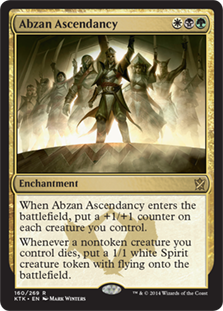In battle, no one wins by creating parity. At best you get a stalemate, and at worst, you become mired in an endless detente, with neither side willing or able to make productive steps towards ending the conflict.
Of course, that also assumes that such an outcome is even possible. Creating a stalemate may work in the real world as ceasefires and negotiations provide alternative avenues towards bringing the fight to a close, but in Magic, that’s simply not an option.
There are exactly four ways a game of Magic can end without a clear winner: having Celestial Convergence or Divine Intervention trigger successfully, having all remaining players in the game quit simultaneously, or if everyone loses at the same time. So while it’s technically possible for a draw in a game designed around wizards summoning giant beasts and casting fireballs at one another, that’s really not its intent. Magic is a deck-based battle royale, and in the end your singular goal is to be the last person standing when the dust settles.
Therefore, although creating board parity is often highly useful to buy yourself time or to make yourself a less vulnerable target than someone else, it rarely helps you win games. To win, the best and easiest strategy is a simple case of quantity.
Take for instance a typical game of Limited. Most players who draft regularly will attest that they’re always on the hunt for cards that are going to give them the biggest advantage possible. Evasion is always one such answer to that, sure, but an equally common one is token generation. Some of the most useful creatures to grab in drafts aren’t necessarily the huge-yet-costly beatsticks, but rather those creatures who generate even more creatures when they hit the battlefield. Why? Because they create an instant two-for-one situation, netting you multiple creatures for attacking and blocking for a single cost.
Having more creatures in your possession while facing a single opponent makes it easier to get through their defenses on the one hand while simultaneously making it that much harder for them to get at you in return. It’s not always guaranteed, but as a tactic, it’s a about as old as they come. Ultimately, you can be as clever as you want, but if you’re staring down an overwhelming horde with little means of stopping them, the fight is going to be over pretty fast.
As a result, having proper defenses in multiplayer is just as (if not more) important, as you have to ensure your ability to defend yourself from multiple opponents each round. Because the number of physical creature cards in your deck is finite, tokens often make up the volume difference, whether as fodder to protect the more valuable parts of your existing army…or if you’d rather go the swarm route and demonstrate a rare instance where quantity indeed beats quality.
In any case, Commander decks certainly benefit from maintaining a constant stream of creatures, especially for a format so keen on board wipes. So, naturally, we wanted to provide a useful suggestion to that end.
Today we have: Abzan Ascendancy

Name: Abzan Ascendancy
Edition: Khans of Tarkir
Rarity: Rare
Focus: Creature Buff / Token Generation
Highlights: Continuing a recent streak of self-explanatory card choices, Abzan Ascendancy is pretty straightforward in terms of its usefulness. Although the card had gotten more attention around the time of the Khans block – especially in Constructed formats – it nevertheless is a worthwhile card to also consider for your next EDH deck, thanks to a pair of creature-centric benefits.
The first effect on this Abzan card bolsters all of your creatures by adding a +1/+1 counter to each, putting it on similar footing to a standard static booster like Glorious Anthem. As always, buffing your array of critters by 1 doesn’t sound like much, but often that little boost makes all the difference.
However, this first ability is more of a bonus, as the card’s biggest impact comes from its latter effect. With Ascendancy on the battlefield, any time one of your all-important creature cards dies, it gets replaced with a 1/1 Flying token. This can be incredibly advantageous to maintain your creature defenses, and them being fliers is particularly handy to boot.
All told, it’s a particularly versatile enchantment for just three mana. Indeed, the card’s biggest downfall is that it requires three different colors to pull off. However, unlike in faster formats where the Ascendancy is cast early to maintain tempo, this card can be handy showing up in any phase of a Commander game.
And, really, any time you can keep your creature numbers at least at parity, the better your odds of success.
Keep an eye out for us to be regularly featuring other more accessible-but-worth-it Commander cards going forward. In the meantime, we’ll keep the light on for you.
![]()
You can discuss this article over on our social media!
Do you have a particular Commander card to suggest for us to shine a future Spotlight on? You can send suggestions to ryan@cardboardrepublic.com
